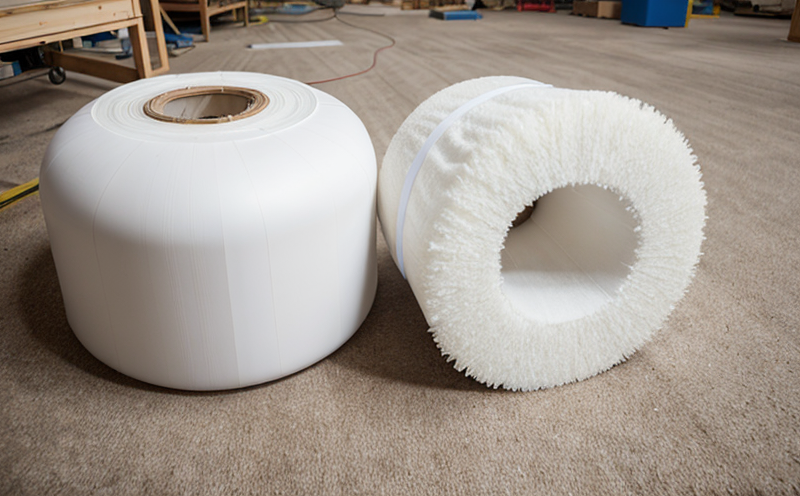ASTM E492 Standard Impact Sound Floor-Ceiling Testing
The ASTM E492 standard is a critical tool in the acoustics, vibration, and noise testing sector for evaluating the impact sound insulation performance of floor-ceiling assemblies. This service is essential for ensuring compliance with building codes that aim to minimize unwanted noise transmission between floors and ceilings within buildings.
Impact sound testing assesses how well materials absorb or attenuate impact sounds such as footsteps, furniture movements, and other impacts. The ASTM E492 standard defines the procedures and equipment required to conduct accurate floor-ceiling impact sound tests. This service is particularly important for industries involved in construction, architecture, and interior design.
The testing process involves placing a standardized tapping machine over a series of predefined tapping points on the test specimen (floor or ceiling) and recording the resulting impact sound levels. The results are then compared against the standard values to determine if the assembly meets the specified performance criteria for impact sound insulation.
Understanding the importance of this service is crucial for quality managers, compliance officers, R&D engineers, and procurement professionals who must ensure that their products or projects comply with relevant standards and regulations. By adhering to ASTM E492, organizations can demonstrate their commitment to reducing noise pollution and enhancing indoor comfort.
Why It Matters
The importance of ASTM E492 impact sound floor-ceiling testing cannot be overstated. Noise is a significant contributor to stress, sleep disturbances, and reduced productivity in both residential and commercial environments. Effective control of impact noise can lead to healthier living spaces and more productive work environments.
- Reduces noise pollution
- Maintains privacy between units
- Enhances overall acoustic comfort
- Saves on remediation costs by ensuring initial compliance
The ASTM E492 standard provides a robust framework for testing, allowing organizations to confidently meet regulatory requirements. By investing in this service, businesses can ensure that their products and projects are not only compliant but also exceed expectations in terms of acoustic performance.
Scope and Methodology
| Key Parameters | Description |
|---|---|
| Tapping Machine | A standardized tapping machine with a specified mass and hammer shape for consistent results. |
| Taping Points | Predefined locations on the floor or ceiling where impact forces are applied during testing. |
| Microphones | Sensitive microphones placed at listening points to capture sound levels accurately. |
| Sound Level Meter | A device used to measure and record the impact sound levels produced by tapping. |
The ASTM E492 method involves placing a standardized tapping machine over predetermined tapping points on the test specimen. The impact sounds are then recorded using sensitive microphones placed at listening points, typically 1 m from the floor and ceiling. The sound level meter measures these impacts to calculate the resulting noise levels.
Acceptance criteria for ASTM E492 include a maximum impact sound class value (IC) of less than or equal to the specified limit. This ensures that the floor-ceiling assembly provides adequate insulation against impact sounds, thereby meeting regulatory and design requirements.
Use Cases and Application Examples
- Residential buildings: Ensuring privacy between apartments.
- Commercial spaces: Maintaining a quiet work environment for employees.
- Hospitals: Reducing noise pollution to enhance patient recovery.
- Offices: Improving focus and comfort for workers.
In practice, ASTM E492 is used during the design and construction phases of buildings. By incorporating this service into their processes, architects, engineers, and contractors can ensure that floor-ceiling assemblies meet or exceed the required performance standards before final installation. This proactive approach not only saves time and money by avoiding post-construction remediation but also contributes to a healthier built environment.





